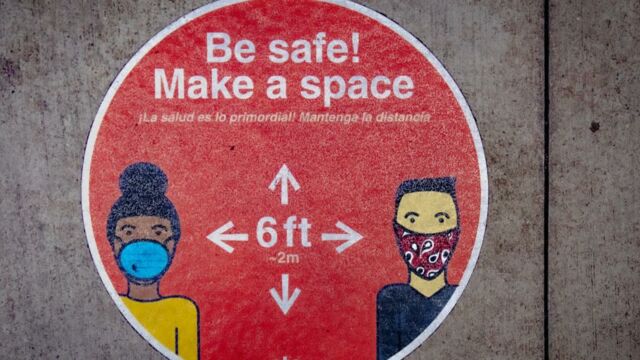According to the world's first models of how the virus survives in exhaled air, the virus loses 90% of its transmissibility within 20 minutes of being airborne. The majority of the loss occurred within the first five minutes. The findings highlight the science of short-range transmission and the importance of social distancing and masks as they become the most effective methods of preventing infection. While ventilation is still beneficial, it is likely to have a reduced benefit.
Discover our latest podcast
Prof Jonathan Reid, the study's lead author and director of the University of Bristol's Aerosol Research Centre, said:
People have been focused on poorly ventilated spaces and thinking about airborne transmission over metres or across a room. I’m not saying that doesn’t happen, but I think still the greatest risk of exposure is when you’re close to someone.
When you move further away, not only is the aerosol diluted down, there’s also less infectious virus because the virus has lost infectivity [as a result of time].
Science of transmissibility
Researchers developed a device that allowed them to produce any number of tiny virus-containing particles. They gently levitated these particles between two electric rings for five seconds to 20 minutes while tightly controlling the temperature, humidity, and UV light intensity of their surroundings. According to the study, once virus particles leave the relatively moist and carbon dioxide-rich atmosphere of the lungs, they swiftly lose water and dry up.
Whereas, the transition to lower carbon dioxide levels is associated with a rapid increase in ph. Both of these variables make it difficult for the virus to infect human cells, but the rate at which the particles dry out depends on the relative humidity of the air. If this is less than 50% the virus loses roughly half of its infectivity in five seconds. After which the fall gets slower and more constant, with a further 19% loss over the next five minutes. The decline in infectivity gets slower at 90% humidity, with 52 % of particles remaining infectious after five minutes. It drops to about 10% after 20 minutes, and then there was no difference between the two environments.
Mask on!
The air temperature had no effect on viral infectivity, contrary to popular opinion that viral transmission is reduced at high temperatures. Prof Reid added:
This is the first time anyone has been able to actually simulate what happens to the aerosol during the exhalation process.
It means that if I’m meeting friends for lunch in a pub today, the primary [risk] is likely to be me transmitting it to my friends, or my friends transmitting it to me, rather than it being transmitted from someone on the other side of the room.
This emphasises the need of wearing a mask in situations where people can not physically withdraw themselves. Further, tests and research are still ongoing to see the results of the Omicron variant.















